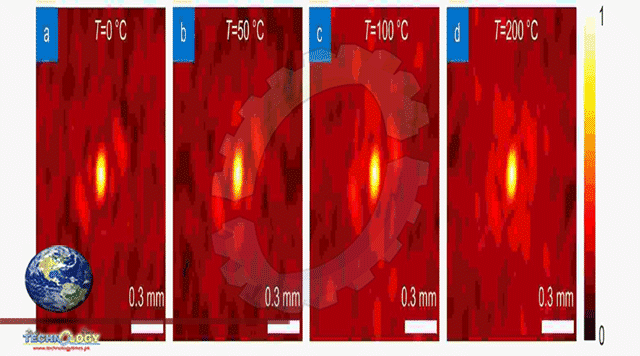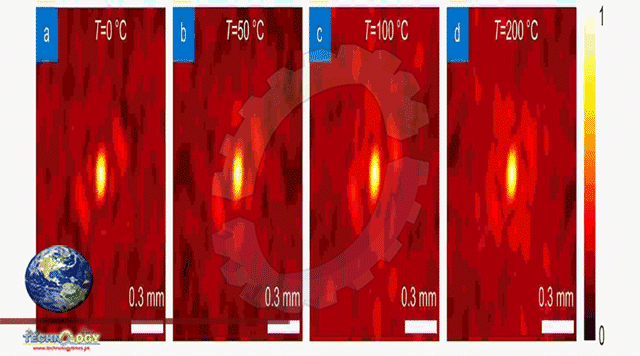Coherence, as a fundamental resource in all areas of optical physics, plays a vital role in understanding interference, propagation, scattering, imaging, light-matter interactions, and other fundamental characteristics from classical to quantum optical wave fields

In a new publication from Opto-Electronic Advances; DOI the research groups of Yangjian Cai from Shandong Normal University, Jinan City, Shandong, China, Fei Wang from Soochow University, Suzhou, China, and Olga Korotkova from Miami University, Miami, FL, USA discuss robust far-field imaging by spatial coherence engineering.
Coherence, as a fundamental resource in all areas of optical physics, plays a vital role in understanding interference, propagation, scattering, imaging, light-matter interactions, and other fundamental characteristics from classical to quantum optical wave fields. In the space-frequency domain, spatial coherence properties are characterized by the two-point spectral degree of coherence (DOC) function, being a normalized version of the cross-spectral density (CSD) function. As a fundamental attribute that describes statical properties of random light fields, the second-order spatial DOC is an essential degree of freedom of partially coherent beams (PCBs). Compared with the first-order statistical parameters such as amplitude, phase and polarization state of the random light field, the PCBs have attracted substantial academic attention owing to their capability to resist turbulence-induced negative effects and to reduce the speckle noise; therefore, they have found important applications, for examples in free-space optical communications, laser materials processing, inertial confinement fusion, optical imaging, and encryption.
On the other hand, due to the multi-degree of freedom of optical field, optical information transmission and recovery by optical field manipulation has been a hot research topic in optics. The existing research shows that the first-order parameters of the optical field, such as wavelength, amplitude, phase, polarization state and orbital angular momentum, can be used as the carrier of information transmission. However, when the light field interacts with matter, especially in a complex environment, such as atmospheric turbulence and obstacle blocked, the above parameters are easily destroyed by the negative effects of the environment, which cannot guarantee the reliability of the information transmission. Due to the beam’s second-order statistical parameters (i.e., degree of coherence) showing strong stability in a complex environment, it is possible to use the DOC of the random optical field as the carrier of information transmission. However, owing to the optical diffraction, the DOC is not propagation-invariant which hinders its use in technologies requiring optical information transfer and recovery. The general problem of modeling of the PCBs, whose DOC remains propagation-invariant, has not yet been tackled.
The research group of Professor Yangjian Cai from Shandong Normal University, Jinan City, Shandong, China, Professor Fei Wang from Soochow University, Suzhou, China, and Professor Olga Korotkova from Miami University, Miami, FL, USA propose a robust far-field imaging by spatial coherent engineering. In this work, based on the generalized Van-Cittert Zernike theorem, the optical image information is encoded into the second-order spatial DOC of the random light field is first introduced. The authors proposed that when PCBs imposed by a cross-phase (CP) propagates in free space, in a paraxial optical system or a turbulent medium, its DOC acquires the same distribution as it has in the source plane. It guarantees the coherent structure (or DOC) propagation-invariant through such phase. This unique propagation feature is employed in a novel protocol for far-field imaging via the DOC, applicable to transmission in both free-space and turbulence. Based on the intensity correlation theorem, they can attain the modulus of the far-field DOC. Then, the authors adopted the Fienup’s phase retrieval (FPR) algorithm to restore the encoded image from the DOC. The experimental results show that the spatial DOC of the random light field can still maintain its stable spatial structure distribution after passing through the thermal turbulence, which provides the possibility to recover optical information with high quality via DOC in the complex turbulent environment. Hereto, both the experimental and the numerical simulation results show that they can realize the far-field imaging via the DOC distribution in the complex environment as well. The results prove the robustness of the proposed method well. Further, the DOC properties cannot be directly detected by any optical device, which demonstrates such a method has confidentiality. The research results are expected to be applied to long-distance optical information encryption, transmission, and communication in a turbulent atmosphere.
Source: Eurekalert
